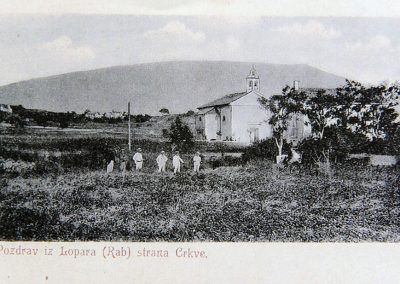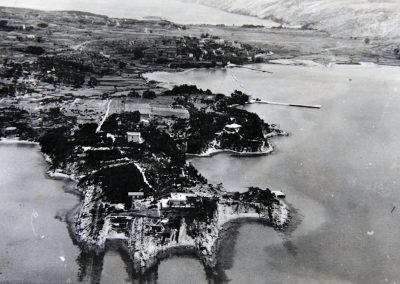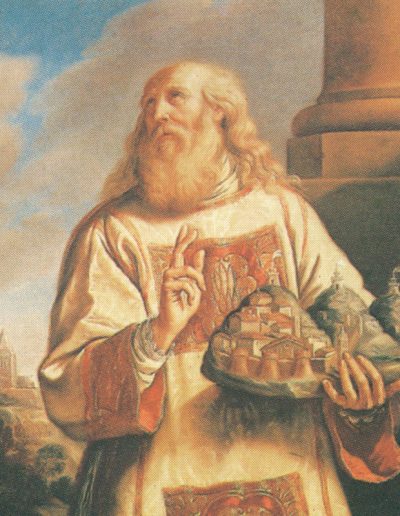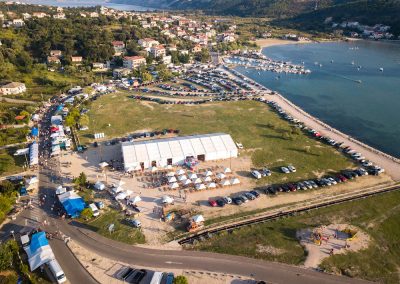Lopar
Culture and history
There are traces of ancient settlements on the entire island of Rab as well as in Lopar itself. These include numerous prehistoric archaeological sites, forts, burial mounds and artefacts, all of which bear witness to the continuous settlement of the island. Writings are rare and unreliable, but the legend says that Lopar is the birthplace of st. Marinus, the stone carver and founder of the Republic of San Marino.
There are several explanations of the origin of the name Lopar. While some believe that its name originates from the Latin word Eporium, meaning protrusion, others believe the name originates from the name of the Greek island of Paros, which was famous in ancient times for its marble.
Since this precious stone has been excavated on the island of Goli otok and near Lopar for a long time, it is assumed that the settlement closest to the quarry was named Neos Paros (New Paros), Neoparo or Epario, which later evolved to Lopar. Other authors believe that the name is of Slavic origin – lopar is also the name for a trowel or platter and the area reminds us of the shape of these tools.
Legend of st. Marinus
Lopar is the birthplace of St. Marinus – the stone carver and the founder of the Republic of San Marino. To his honour, the name of “San Marino” was given to a tourist village, an auto-camp and the Cultural and Artistic Association of Lopar. There is a monument dedicated to St. Marinus at the centre of town.
According to a folktale, Marinus was born in Lopar more than 17 centuries ago. After he learned the craft of stonecutting, he sailed to find better fortune across the Adriatic Sea. He docked at the shore of the Apennine Peninsula, near today’s city of Rimini. Very soon he became appreciated in the Christian community but was prosecuted due to his Christian sermons, while fleeing he found refuge at Mount Titan.
Very soon the other refugees followed his path, attracted by the safety of Mount Titan and by the fame of the holiness of the eremite Marinus. He was surrounded by numerous believers who formed a small community and the “heart” of their Christian religion was a little church they built there. Those were the beginnings of the Republic of San Marino – the oldest existing republic in Europe. After his death, Marinus was buried in the chapel personally built by him and his community. Later he was declared saint and patron of San Marino.
Customs and tradition
The bearer and keeper of Lopar customs and traditions are The Cultural-Artistic Society San Marino. Although formally established in 1998., it has been actively working on the preservation of cultural heritage, customs and traditions since the early 1980ies. Their work can be best seen in public performances during summer. They usually dance traditional dances “tanac” and “pojka”, accompanied by a local version of pipes, called “mih”. The schedule of their performances can be found in info-boards at hotel receptions and in agencies.
Loparski maškari is a specific carnival tradition that marks the end of the winter and arrival of the spring in a unique and distinguished way. We have preserved both the art of creating the carnival masks as well as the carnival ritual and the whole town takes part in it. If you happen to travel around during carnival season, make sure to drop by and join the festivities.
In order to keep the local customs and traditions alive and to pass them on to next generations, as well as to introduce them to our visitors and guests, we have established a specific event in early September, Lopar Night – Return to the Roots.
Lopar Night stages the life of St. Marinus and his departure from the island, but at the same time it is a full day exhibition of old local customs, arts and crafts that have been the everyday life of our ancestors, the food they have eaten and tools they have used – some of which are still present and appreciated as a valuable reminder of the past.
Votive celebration – Križi
The last Sunday in April is Križi, the votive celebration of all the people of the island of Rab, the people from Lopar included, when believers from all the island’s parishes make a pilgrimage to the town of Rab. The vow of the believers goes back to the plague epidemics which devastated the island in mid 15th century. This great misfortune led many to look for salvation and hope in faith and make a vow in the name of themselves and their offspring to their Saviour Jesus Christ. On that day the people of Lopar form a long procession and walk (over the hill, taking the Premužić trail via Fruga) to the Cathedral of the Assumption of Mary in the town of Rab, where they meet other pilgrims who arrived from other towns in the island to celebrate the Holy Mass together.
The flora and the fauna
The Lopar peninsula is the habitat of numerous species of wild Mediterranean plants. The most important cultivated plants are grape, olives, figs, potatoes and tomatoes.
The Peninsula’s numerous species of flora are continuously being recorded as part of the Transverzala botana project, initiated by the Lopar Tourist Board in co-operation with the LoparMunicipality, the county of Primorje-Gorski kotar, the “Priroda” public institution and the Rab Centre for Research and Development
Apart from farm animals, the island’s fauna includes wild animals such as the hare, pheasant, and some birds of prey, as well as some species of big game in the close-by island of Grgur, such as the fallow deer and roe dear.
Schools of dolphins, always ready for play and frolic, can often be seen off the shore of Lopar.
Other islands
Goli otok (The Bare Island) is a must-see boat excursion – known as the biggest male penitentiary in ex-Yugoslavia, often compared to Alcatraz, it has been abandoned over 30 years ago, but it remains an attraction for visitors for its visible reminders of the harsh history. Besides the ruins, the harsh nature of the island is equally challenging and attractive. Therefore Goli otok is a popular hiking and trekking location, so our local Rab Trekk occasionally spreads to Goli island as well. Bring plenty of water, put on some good trekking shoes and discover all the secrets of Goli island.
The nearby island of Sv. Grgur (St. George) will lure you with beautiful bays surrounded by thick greenery. Way kinder than Goli island, it will welcome you for a walk among the treetops and into the deep of the island. During the walk, you will often encounter friendly deer, does and other animals living on the island. If you hand them an apple or another piece of fruit, you may make a friend for a lifetime. Remember that these are wild animals, so do not feed them bread and other processed food.
Islet of Lukovac is the big hump in the bay of Paradise Beach – you can easily swim to it or rent a kayak and paddle there. Being so close to the beach, it is an attractive must-see place and therefore one of the most photographed spots in the island of Rab. Make sure you have your own photo made right on the spot!
Islet Školjić is a special attraction for our visitors. You can walk to it or swim, as it is right in front of beach Stolac. The main attractions are the sandy stones carved by the sea and the wind, so they create unique shapes and characters. One can spend hours watching them and discovering faces, animals and other creatures.
Featured

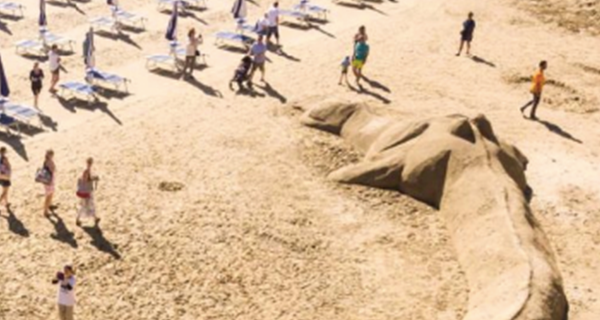

Activities
Lopar offers daily half-day boat trips with a glass bottom in the waters of Lopar and Goli Otok and Grgur.
Special features of Lopar

Sand paradise

Rich culture and history
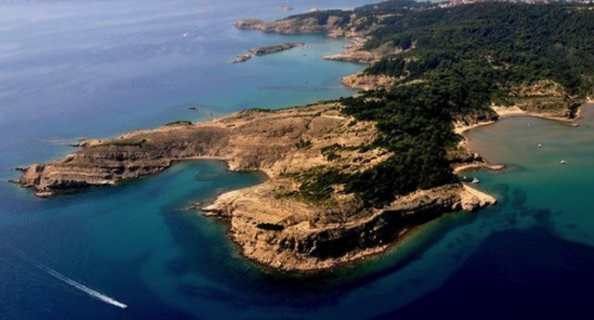
An oasis of natural beauty










